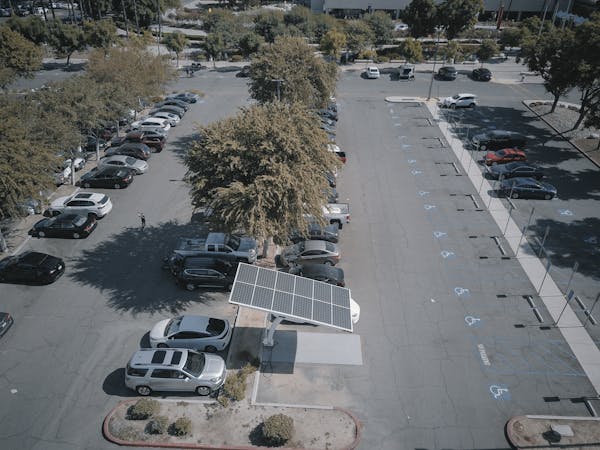Table of Contents
ToggleEnergy requirements in recent decades have reached concerning heights as the use of fossil fuels and natural gas to power human civilization is unsustainable. Therefore, the keen push for more sustainable sources of energy through technological advancement by industries.
In particular, the automobile industry being one of the biggest consumers of fossil fuels. This led to a dire need by the industry to incorporate clean, renewable energy in their vehicles. This has led to the innovation of the solar car.
What is a solar car?
Solar-powered cars are electric cars that have built-in solar cells which convert sunlight into electrical energy. The key distinction between solar cars and gas-fueled cars is their environmental impact.

Cars powered by fossil fuels have combustion engines. These engines burn fossil fuels, which in turn generate carbon gases. When released into our atmosphere, these gases result in air pollution. In contrast, solar cars leave virtually no carbon footprint as the generation of electricity via sunlight does not come with pollutants as a byproduct.
There are a few solar cars currently available for public use. The Lightyear One, Aptera Sol, Sono Motors Sion, Hyundai IONIQ 5 and the Wolfgang Truck are a few examples that are quickly garnering popularity.
How does a solar car work?
Solar cars are specially fitted with solar cells on the car’s surface, predominantly on the roof of the car. These solar cells are semiconductors, usually made out of silicon.
A semiconductor has both a negatively-charged and a positively-charged side. When sunlight hits the semiconductor, an electron is displaced. The free-electron then travels to the negatively-charged side of the semiconductor, causing a cascading electron flow. The movement of these electrons will then generate electricity to power the rechargeable battery of the solar car.
What are the shortcomings of a solar car?
Despite the potential positive impacts solar cars have on our future, the implementation of fully solar-powered vehicles is still very much in the conceptual stage of development. Many practical issues need to be ironed out before we can push this to the general public. Here are a few drawbacks of solar cars:
- Solar cars are very weather-dependent. Rainy and cloudy days can severely reduce its efficiency.
- Solar technology is very expensive, thus the initial investment cost for a solar car can be quite high.
- Due to its relatively recent appearance in the market, maintenance services for solar cars are not readily available.
What do solar cars cost?
The price of solar cars varies from model to model. However, it is safe to say that the initial price of a solar car is significantly higher than that of gas-fueled cars. The following are examples of solar cars and their price ranges:
- Tesla Model S ($75,000 – $100,000)
- Lightyear One ($175,000)
- Sono Motors Sion ($34,000)
- Aptera Sol ($25,900)
How long can a solar car run?
In the absence of sunlight, the average battery pack of a solar car can last 400 km or 250 miles before needing to recharge. Here is where the solar car outshines its competition. The car battery can recharge during a drive or even when it’s parked as long as it has direct exposure to sunlight. This allows the car to drive past the 400 km limit before needing another recharge. It not only saves you a lot of fuel, but also saves time on frequent stops at a gas station.
Do solar cars work at night?
Yes, solar cars can still function at night or on cloudy days when the sun is obstructed. Solar-powered vehicles are equipped with batteries that can store energy gained from the sun to be used at a later time. The presence or absence of the sun does not necessarily dictate your driving schedule.
Solar car races
Solar car racing is a competitive sport where participants race one another in solar-powered vehicles of their design. The two most popular races are the American Solar Challenge and the World Solar Challenge.
The American Solar Challenge was held in 2016 where participants raced from Ohio to South Dakota with a total distance of 3,178 km. The World Solar Challenge, on the other hand, was held in Australia, where participants had to race across the whole Australian continent.
These races were mainly indulged by university students as a way to promote creative thinking using green energy. Factors such as aerodynamics, power consumption, and even weather forecasting had to be taken into account in these races. Not only were these competitions a test of physicality, but they were also a test of wit and technological ingenuity.
Is there a future for solar cars?
Solar cars, as well as solar energy in general, are bound to play a prominent role in humanity’s future endeavours. It provides an alternative to the standard gas-fueled cars – they are eco-friendly and save money on car fuel consumption. Solar cars are a significant long-term investment for the driver’s finances and the environment.
Conclusion
It is worthy to note that solar cars have some shortcomings that need to be resolved before we can achieve this future. These include inefficiency in low sunlight conditions and high initial costs.
However, scientific advancements in solar technology are being made every day to improve the efficiency of solar cells. At this rate, it won’t be long before solar cars are feasible and affordable for everyone.
For more on solar energy, solar panels and the latest solar technology, head over to Just Solar.







